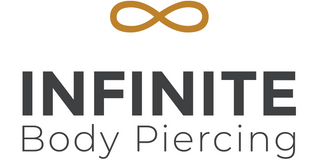Nipple Piercing FAQ
Does it hurt?
While this piercing does pass through thicker tissue than a few other piercings, most people—women especially—are surprised that it is not nearly as bad as they expected. Think of it as one really hard, quick bite. (Well, two actually, if you’re getting both nipples pierced.)
Is there any reason I shouldn’t get them both done at the same time?
As far as healing and aftercare is concerned, it’s just as easy to take care of both as it is to care of one. You also save money if you do choose to get both nipples pierced during the same sitting, as we offer a discount for those getting two or more piercings at the same time. If you choose to get them done separately, however, you will still have one to play with while the other heals.
Will my nipples become more sensitive after the piercing? Can I lose sensation?
Your nipples will become more sensitive after being pierced, not less. Nerves in the nipple are spread out and not in one place that can be severed by being pierced. If it were a serious risk, there wouldn’t be as many people getting it done, and there certainly wouldn’t be as many hyper-sensitive pierced nipples out there under people’s clothes. Some people do describe a loss of sensation as they “get used to” their piercings; that their nipples are not as sensitive as they became after they were first pierced, and that they have become only as sensitive as they were before being pierced. For these clients, we often recommend inserting thicker jewelry and stretching the size of the piercing a bit to bring back a little of the initial “titillation.”
Will they show through clothing?
How likely your piercing is to show through clothing depends upon what type of clothing and what type of jewelry you are wearing. Barbells with small balls tend to be less noticeable than rings and nearly invisible under tight-fitting clothing. When it comes to women and their nipple piercings, padded bras hide most jewelry. But if you want to show off your jewelry—and many people do—go with slightly larger balls on barbells, and consider stretching to thicker and larger jewelry when your piercings are healed.
Which is better, a ring or a barbell?
In almost all cases barbells are recommended for initial nipple piercings, as they tend to be the easiest to heal. For men that are physically active (working out or participating in sports), barbells are much less likely to get knocked around or caught. For women, barbells are simply easier for healing and managing under bras and other clothing.
After nipple piercings are healed, rings can sometimes be worn, but they must be large enough to not unnecessarily distort the piercing. For men, this usually means at least a 1/2″ minimum diameter. For women, this means 5/8″ or larger. However, it is important to note that for many women, rings can be problematic even after healing, as suitable jewelry depends on not only size of the nipple, but breast size and nipple location on the breast.
Can I go swimming?
It is best to avoid swimming for the full duration of the healing period. The risk to your piercing depends on where you’re swimming: saltwater and chlorine may be okay for your piercing, however, other bacteria in the water may be problematic; the water on a beach in the tropics is not the same at the water at the Jersey Shore; and you can never be sure how balanced the chemical levels are in anyone else’s pool—or what else may be in the water. Definitely avoid hot tubs, quarries, or lakes, as here the water quality is even more questionable. At a minimum, plan to avoid swimming for at least three months, and if you do swim during the healing process, the most important thing to do is to make sure that you clean your piercing afterward.
Can small or inverted nipples be pierced?
Almost any nipple can be pierced, including small and inverted ones. As long as your nipple stands erect when it is played with or becomes cold, it can be pierced. With smaller nipples you may need smaller initial jewelry, but nipples often grow once pierced so the piercing can usually be stretched after healing—increasing the size of the nipple as well. However, it is important to note that if your nipples are so flat or inverted they do not come up even when tweaked or cold, piercing the nipple is sometimes not recommended, as the jewelry is more likely to migrate forward or grow out over time.
Can women still breastfeed after piercing their nipples?
Piercing of the nipples does not affect the ability to breastfeed. The nipple is comprised of multiple milk ducts, not just one central channel. Your milk ducts have the ability to reroute themselves if faced with an impediment much in the same manner that blood capillaries divert around blockages. It has also been noted that those who have (or have had) their nipples pierced may even have a lower incidence of infections, irritation, or scar tissue from breastfeeding, probably from increased blood flow, hygiene, and simple “toughening up” of the skin.
That being said, you will want to avoid getting your nipples pierced if you are currently nursing (obviously), as you want your piercings to be fully healed before the little one goes anywhere near them.
Can I still be pierced after breast surgery?
To be safe, talk to your doctor first. Nipple piercing after breast augmentation isn’t often an issue, as long as healing is complete. (This can mean waiting six months to a year after surgery.) Nipple piercing is not recommended after breast reduction surgery, as the vascularity of the tissue can be compromised, leading to complications with healing.
















